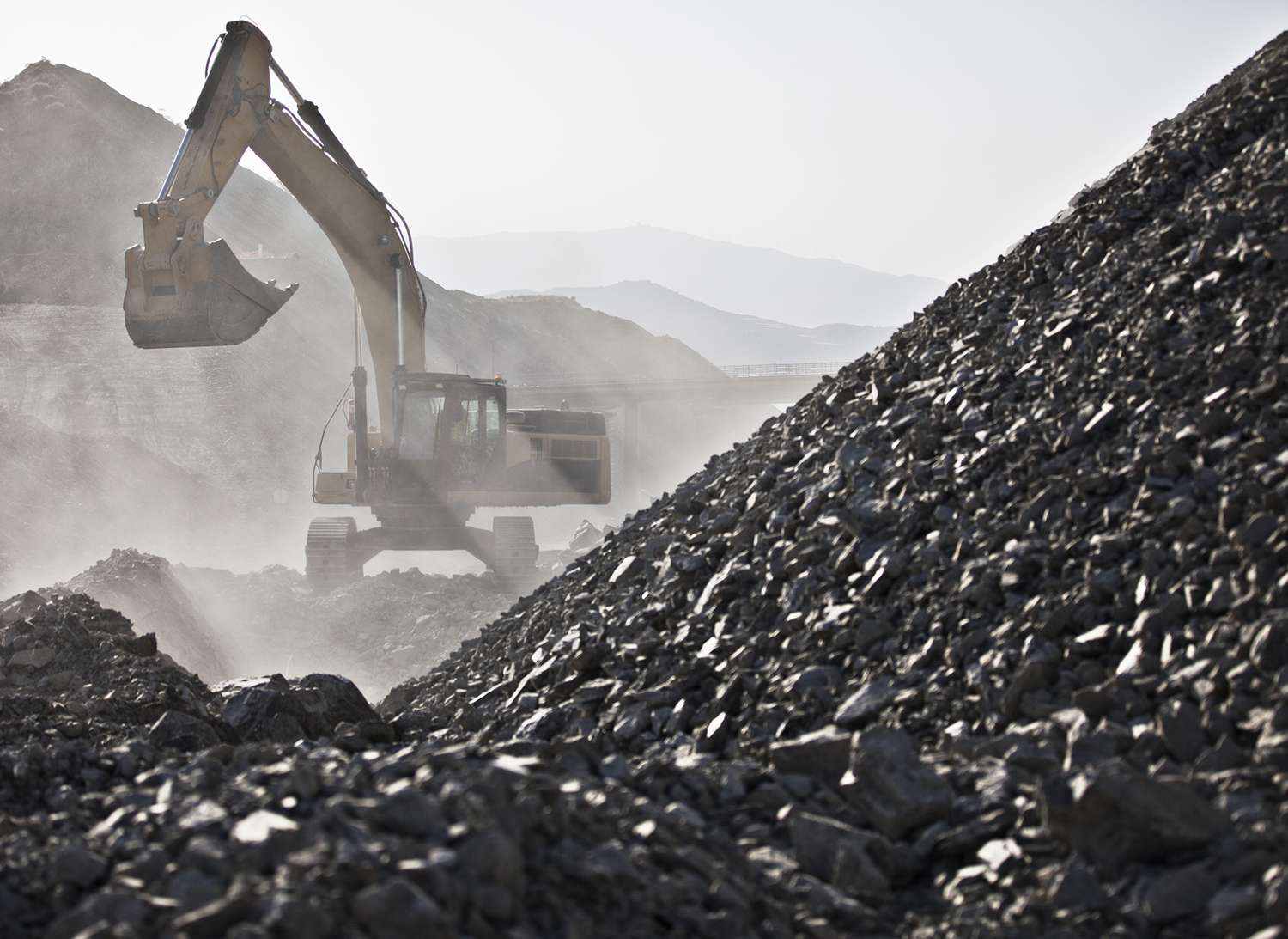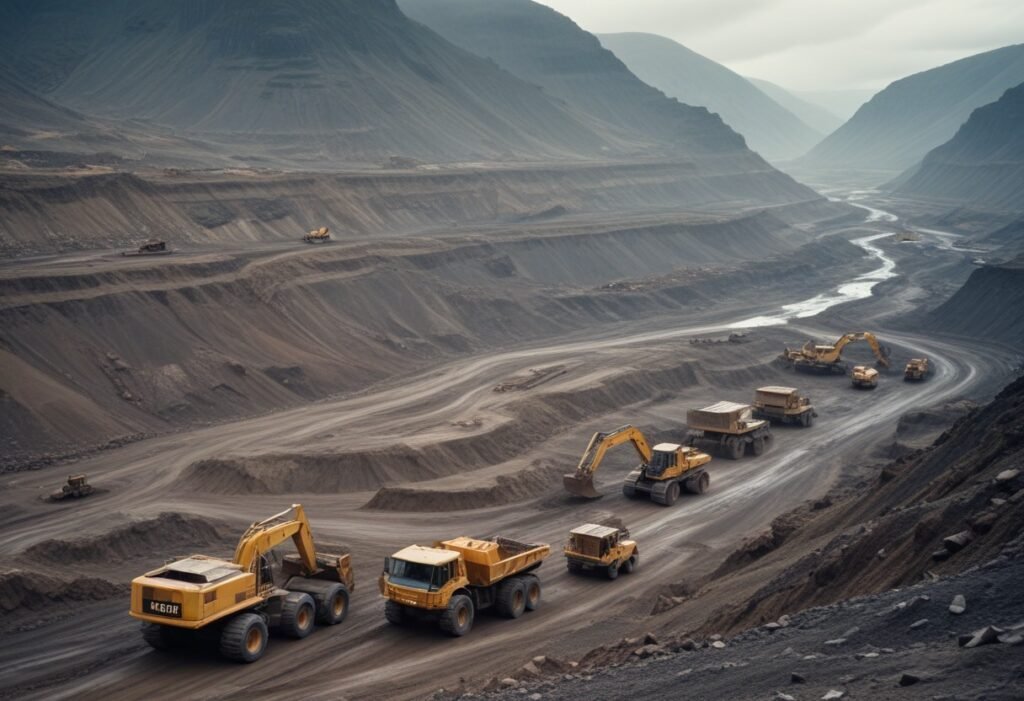Top 10 Countries Contributing in Mining and Metals Industry Market

Mining and Metals Industry Overview
The mining and metals industry serves as a vital foundation for global infrastructure, manufacturing, and technological advancement. In 2023, the global mining and metals market size was USD 1.5 trillion and USD 1.57 trillion in 2024. By 2031 the mining and metals market will be USD 2.36 trillion, with a compound annual growth rate (CAGR) of 5.20%. This growth is propelled by increasing urbanization, industrialization in emerging markets, and advancements in sustainable mining practices. In 2023, the market for precious metals, including gold and silver, reached USD 350 billion, reflecting robust demand from investors and industrial applications. Furthermore, the global market for industrial metals such as copper, aluminum, and zinc will exceed USD 800 billion by 2026, driven by infrastructure development, automotive manufacturing, and renewable energy projects. The transition towards electric vehicles and renewable energy sources is fueling demand for critical metals used in batteries and solar panels, thereby reshaping market dynamics.
Emerging markets such as China, India, and Brazil are pivotal in shaping the future of the mining and metals industry. Rapid urbanization and infrastructure investments are driving significant demand for construction materials and industrial metals. For example, China’s steel production, a key indicator of global metals demand, will grow at a steady pace, supported by government stimulus and urban development initiatives.

In addition to market expansion, the industry is witnessing a paradigm shift towards sustainable mining practices and environmental stewardship. The adoption of technologies such as autonomous vehicles, remote sensing, and AI-driven analytics is enhancing operational efficiency and minimizing environmental impact. The global market for sustainable mining solutions, which includes water management systems and renewable energy integration, will grow at a CAGR of 7.9%, reaching USD 12.4 billion by 2026.
Regulatory frameworks promoting responsible mining practices and community engagement are also shaping industry trends. Stakeholders are increasingly prioritizing transparency, ethical sourcing, and social responsibility in mining operations. As the mining and metals market continues to evolve, investments in technological innovation, resource efficiency, and ESG (Environmental, Social, and Governance) initiatives will be critical in driving sustainable growth and resilience across global supply chains.

Exploring the Global Mining Landscape: Key Regions and Trends
China (Market Size: USD 299 billion)
As of 2023, China maintains a dominant position in the global Mining and Metals Market with a substantial market share of 27.3%, with market size of USD 299 billion. The country’s robust industrial infrastructure and extensive mining operations contribute significantly to its market size. China’s focus on infrastructure development, including roads, railways, and urbanization projects, drives demand for metals such as steel and aluminum. Moreover, China’s strategic investments in renewable energy and electric vehicles bolster the market for metals essential in battery manufacturing and renewable energy infrastructure. Government policies promoting mining activities and advancements in mining technologies further support China’s leading position in the global Mining and Metals Market.
Australia (Market Size: USD 234 billion)
According to cognitive market research, Australia holds a notable position in the global Mining and Metals Market, accounting for 13.2% market share, with a market size of USD 234 billion in 2023. The country’s rich mineral resources, including iron ore, coal, gold, and copper, contribute significantly to its market presence. Australia’s mining market benefits from advanced mining techniques and infrastructure, ensuring efficient extraction and export capabilities. The mining industry plays a pivotal role in Australia’s economy, with mining exports being a major source of revenue. Additionally, Australia’s stringent environmental regulations and focus on sustainable mining practices enhance its attractiveness as a reliable source of high-quality metals and minerals globally.
United States (Market Size: USD 156 billion)
In 2023, the United States commands a significant position in the global Mining and Metals Market, holding 12% of the market share with a market size of USD 156 billion. The U.S. mining market is diverse, encompassing a range of metals such as copper, gold, silver, and rare earth elements. The country’s mining industry benefits from advanced technology and infrastructure, ensuring efficient extraction and processing operations. Key drivers of growth include the demand from markets such as construction, automotive, and aerospace, which rely heavily on metals such as steel, aluminum, and titanium. Moreover, the U.S. market is influenced by its emphasis on technological innovation and sustainable mining practices, supported by regulatory frameworks that promote environmental stewardship and resource efficiency.

Russia (Market Size: USD 130 billion)
Russia plays a significant role in the global Mining and Metals Market, capturing 10% of the market share with a market size of USD 130 billion in 2023. The country’s vast mineral wealth, including reserves of iron ore, nickel, aluminum, and palladium, underpins its strong market presence. Russia’s mining industry benefits from extensive resources and efficient extraction capabilities, supported by a robust infrastructure network. Key markets driving demand include metallurgy, construction, and machinery manufacturing, which rely heavily on Russian metals. Additionally, Russia’s geopolitical position as a major supplier of metals to global markets enhances its strategic importance in the Mining and Metals Market. Government initiatives aimed at modernizing mining operations and promoting technological innovation further bolster Russia’s competitive edge in the global mining market.
Canada (Market Size: USD 117 billion)
Canada maintains a significant position in the global Mining and Metals Market, holding a 9% market share of the total revenue generated, with a market size of USD 117 billion in 2023. The country’s mining market is characterized by abundant natural resources, including significant deposits of gold, copper, nickel, and uranium. Canada’s mining industry benefits from advanced technologies and environmentally responsible practices, ensuring sustainable resource extraction and processing. Key drivers of growth include strong demand from markets such as energy, infrastructure, and manufacturing, which rely heavily on Canadian metals. Moreover, Canada’s stable political environment and supportive regulatory framework enhance investor confidence in the mining market. Strategic investments in infrastructure and innovation further strengthen Canada’s competitiveness in the global mining market.

Brazil (Market Size: USD 91 billion)
As per CMR, Brazil plays a crucial role in the global Mining and Metals Market, capturing a 7% market share with a market size of USD 91 billion in 2023. The country boasts extensive mineral reserves, including iron ore, bauxite, and manganese, which drive its prominent position in the global market. Brazil’s mining industry benefits from modern extraction techniques and infrastructure, facilitating efficient production and export capabilities. Key sectors driving demand include steel production, automotive manufacturing, and infrastructure development, which rely heavily on Brazilian metals. Additionally, Brazil’s geographic and economic scale allows it to be a major supplier to global markets, particularly in South America. Government initiatives aimed at promoting sustainable mining practices and attracting foreign investment further support Brazil’s role as a key player in the global mining and metals market.
Mexico (Market Size: USD 26 billion)
Mexico holds a notable position in the global Mining and Metals Market, commanding a 2% market share with a market size of USD 26 billion in 2023. The country’s mining market is diverse, encompassing precious metals such as silver, gold, and copper, as well as industrial minerals such as zinc and lead. Mexico benefits from its rich geological endowment and favorable mining policies that encourage investment and development. Key drivers of growth include strong domestic demand from sectors such as construction, automotive, and electronics, which rely on Mexican metals. Moreover, Mexico’s strategic location and trade agreements facilitate exports to major markets such as the United States and Canada. The Mexican government’s efforts to modernize infrastructure and promote sustainable mining practices further enhance the competitiveness of its mining industry on the global stage.

South Africa (Market Size: USD 71.5 billion)
South Africa maintains a significant presence in the global Mining and Metals Market, holding a 5.5% market share with a market size of USD 71.5 billion in 2023. The country is renowned for its abundant mineral resources, including platinum, gold, manganese, and coal, which underpin its strong market position. South Africa’s mining industry benefits from advanced extraction techniques and infrastructure, ensuring efficient production and export capabilities. Key sectors driving demand include mining equipment manufacturing, automotive catalytic converters, and jewelry fabrication, all of which rely heavily on South African metals. Additionally, South Africa’s mining market plays a crucial role in the country’s economy, providing employment and generating significant export revenue. Government initiatives aimed at promoting sustainable mining practices and addressing socio-economic challenges further bolster South Africa’s competitiveness in the global mining and metals market.
Chile (Market Size: USD 52 billion)
According to cognitive market research, Chile maintains a notable position in the global Mining and Metals Market, holding a 4.0% market share with a market size of USD 52 billion in 2023. The country is renowned for its rich copper reserves, making it the world’s leading producer of this essential metal. Chile’s mining market also encompasses significant deposits of lithium, gold, and silver, contributing to its diverse mineral wealth. The industry benefits from advanced mining technologies and infrastructure, ensuring efficient extraction and processing operations. Key drivers of growth include global demand for copper, driven by sectors such as electronics, construction, and renewable energy. Moreover, Chile’s stable political environment and supportive regulatory framework enhance investor confidence in the mining market. Strategic investments in sustainability and innovation further strengthen Chile’s competitive edge in the global mining market.
India (Market Size: USD 45.5 billion)
India plays a growing role in the global Mining and Metals Market, holding a 3.5% market share with a market size of USD 45.5 billion in 2023. The country’s mining market is diverse, encompassing metals such as iron ore, coal, aluminum, and zinc, among others. India’s mining industry benefits from extensive mineral reserves and a growing domestic demand driven by sectors such as infrastructure, manufacturing, and automotive. The market is supported by advancements in mining technology and infrastructure development, ensuring efficient extraction and processing capabilities. Key growth drivers include government initiatives to boost domestic production, attract foreign investment, and promote sustainable mining practices. India’s strategic geographical location and strong industrial base further contribute to its prominence in global mining and metals.

Conclusion
The future of the mining and metals market is closely intertwined with sustainable development goals and technological advancements. Emerging technologies such as blockchain for transparent supply chains, renewable energy integration for reduced carbon footprints, and enhanced extraction techniques for low-grade ores are poised to redefine industry standards. Strategic investments in research and development, coupled with collaborative efforts across stakeholders, will be pivotal in realizing these advancements and driving inclusive growth. Embracing these opportunities requires a proactive approach to innovation and sustainability, ensuring that the mining and metals industry continues to evolve responsibly while meeting global demand for essential resources in a rapidly changing world.
You can place an order or ask any questions, please feel free to contact at feronia@wit-stone.com | +86-15655559799



